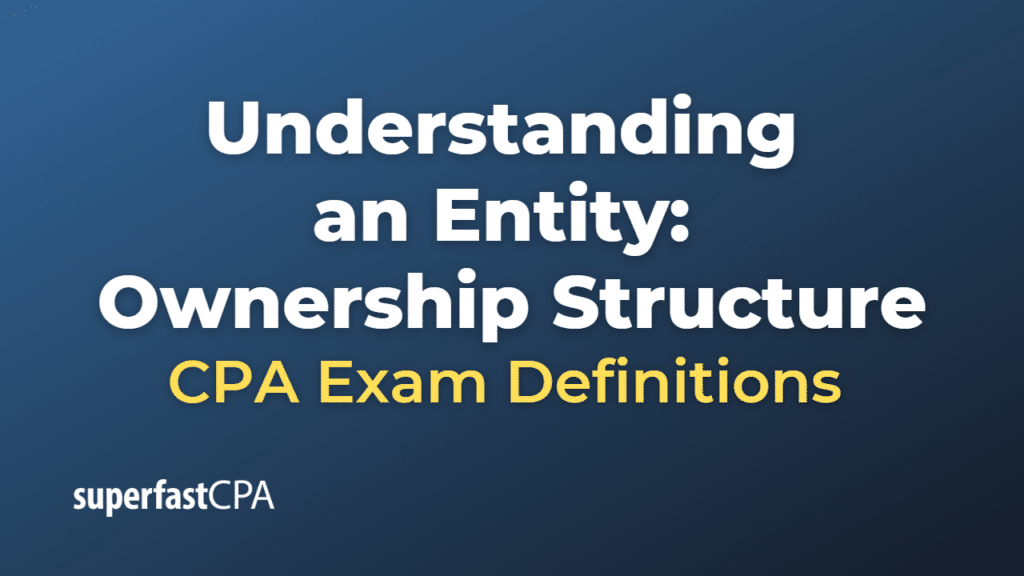Understanding an Entity: Ownership Structure
An entity’s ownership structure defines the nature of the entity by determining the distribution of control, decision-making authority, and ownership interests among its shareholders or owners. Ownership structures can range from simple single-owner businesses to complex, multi-layered structures involving various types of shareholders, such as individuals, institutional investors, or other entities. The ownership structure can impact the risk of material misstatement in an entity’s financial statements in several ways:
- Complexity of ownership structure: Complex ownership structures, such as those involving multiple layers of holding companies, subsidiaries, or special purpose entities, can increase the complexity of financial reporting, consolidation, and intercompany transactions. This increased complexity can lead to a higher risk of material misstatement due to errors, misinterpretations, or fraud.
- Control and decision-making authority: The distribution of control and decision-making authority among owners can affect the entity’s internal control environment, governance practices, and risk management. Concentrated ownership can lead to a lack of oversight and accountability, increasing the risk of material misstatement due to management override of controls or manipulation of financial results. Conversely, dispersed ownership structures may result in more robust governance and oversight, potentially reducing the risk of material misstatement.
- Related party transactions: An entity’s ownership structure can influence the frequency and complexity of related party transactions, which can impact the risk of material misstatement due to the potential for undisclosed or improperly accounted for transactions. Related party transactions can be challenging to identify, measure, and disclose accurately, increasing the risk of material misstatement in the financial statements.
- Ownership motivations and incentives: The motivations and incentives of different types of owners can influence the entity’s financial reporting objectives and management’s actions. For example, institutional investors may focus on short-term financial performance, while family-owned businesses may prioritize long-term stability. These differing objectives can affect the risk of material misstatement due to management bias, manipulation of financial results, or aggressive accounting practices.
- Legal and regulatory requirements: Different ownership structures may be subject to varying legal and regulatory requirements, which can impact the entity’s financial reporting obligations, disclosure requirements, and overall complexity. Compliance with these requirements can affect the risk of material misstatement in the financial statements.
When assessing the inherent risk of material misstatement during the planning and execution of an audit, auditors should consider the impact of an entity’s ownership structure on its operations and financial reporting. Understanding the implications of the ownership structure can help auditors design appropriate audit procedures to address the risks associated with the entity’s ownership and provide reasonable assurance that the financial statements are free from material misstatement.













